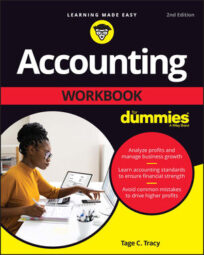To aid in their decision-making analysis, business managers need for accountants to develop a model of operating profit for their business that, theoretically, fits on the back of an envelope.
Here's an example of such a compact profit model:
(Unit Margin × Sales Volume) – Fixed Expenses = Operating Profit
Suppose the sales price is $100 and variable costs equal $65 per unit. Therefore, the unit margin is $35. Assume the business sells 100,000 units, so its total contribution margin for the period is $3,500,000 ($35 unit margin × 100,000 units = $3,500,000 total contribution margin). Last, assume its fixed expenses equal $2,500,000. So its operating profit is $1,000,000 for the period.
The accountant should develop a condensed profit model, which is limited to the critical factors that tip profit one way or the other. This profit model helps the business manager focus on the key variables that drive profit behavior.
For example, continuing with the example just mentioned, suppose the manager is contemplating cutting sales price 10 percent to boost sales volume 20 percent. Using the profit model, the business manager can quickly do a before and after comparison of the proposed sales price cut:
Before: ($35 unit margin × 100,000 units) – $2,500,000 fixed expenses = $1,000,000 operating profit
After: ($25 unit margin × 120,000 units) – $2,500,000 = $500,000 operating profit
Giving up 10 percent of sales price for a 20 percent gain in sales volume may have intuitive appeal, but this decision would cripple profit. Operating profit would drop from $1,000,000 to only $500,000; the manager would give up $10, or 29 percent of the $35 margin per unit. The sacrifice is too great in exchange for only 20 percent gain in sales volume.

